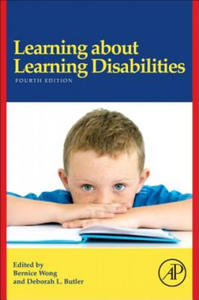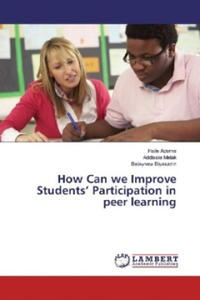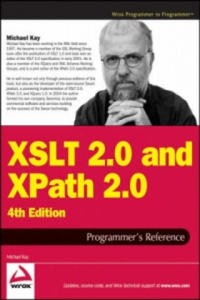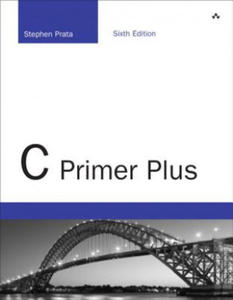libristo impact of self concept on language learning 2707964
- znaleziono 27 produktów w 9 sklepach
The Impact Of Self - Concept On Language Learning
Książki Obcojęzyczne>Angielskie>Language>linguistics>Psycholinguistics>Language acquisitionKsiążki Obcojęzyczne>Angielskie>Societ...
0x0159448100000000
Sklep: Gigant.pl
Learning About Learning Disabilities Elsevier Science Publishing Co Inc
Książki / Literatura obcojęzyczna
Learning about Learning Disabilities, 4e continues to provide equal attention to the intellectual, conceptual, and practical aspects of learning disabilities. The Fourth Edition of this popular title presents 80% new material, keeping the chapters up to date in this fast-moving field. With new contributors, and 11 new chapters, coverage is both comprehensive and thorough, encompassing the classification and identification of learning disabilities, learning disabilities in reading, writing, math, and social studies, interventions, and the issues germane to different age ranges of the learning disabled: children, adolescents, and adults. Readers will find Learning About Learning Disabilities, Fourth Edition suitable for use as a reference source for researchers or as a graduate level text.§Reviews of previous editions:§"This text provides a balanced focus on both the conceptual and practical aspects of learning disabilities. Its research coverage is more comprehensive and of greater depth than any other LD textbook, and it is distinctive in its treatment of such important areas as consultation skills and service delivery." -CHILD ASSESSMENT NEWS " ... provides a broad overview of some important issues in relation to the education and development of pupils with learning disabilities... Wong has succeeded in providing detailed descriptions and comments within a book which covers a broad range of topics. Without exception the chapters are clearly written and accessible, and many provide the reader with challenging ideas and practical suggestions." -BRITISH JOURNAL OF SPECIAL EDUCATION§Learning Disabilities occur in 20% of the population. Three million children in the US have a learning disability and receive special education in school. §30% of children with learning disabilities drop out of high school, and 48% of those with learning disabilities are out of the workforce or unemployed. §Discusses different types of learning disabilities including problems with attention, memory, language, math, reading, and writing §Encompasses the impact of LD on learning as well as social competence and self-regulation §Provides research summaries on most effective ways to teach children with LD §Encompasses a lifespan perspective on LD, discussing the impact on children, adolescents, and adults
Sklep: Libristo.pl
Family background and learning English in the United Arab Emirates VDM Verlag
Książki / Literatura obcojęzyczna
An investigation of the impact of beliefs and attitudes on learning English in the UAE was conducted against a background history of education in the UAE, which has been undergoing major transitions from tradition to modernity since the mid-1960s. The life-worlds of students and areas of learning were examined through socio-cultural theory, a Western sociological concept that was used as a guiding theoretical perspective. It had strong explanatory and interpretive power in accounting for much UAE study data, being a non-essentialist, all-encompassing model of social reproduction that produced a qualitative account of social reality. Three variables of analysis were identified: level of education (secondary school versus university), level of achievement (high achievers versus low achievers), and gender. Following a pilot study (10 students and 5 teachers), a questionnaire on beliefs and attitudes about language learning was administered to 234 students and semi-structured interviews were conducted with 39 students, 12 parents, 14 teachers, 4 administrators, and one high-profile policy maker.
Sklep: Libristo.pl
How Can we Improve Students' Participation in peer learning LAP Lambert Academic Publishing
Książki / Literatura obcojęzyczna
The objective of this work is to enhance student's participation in peer learning so as to improve the teaching-learning process in the classroom with a proactive participation of students. The study is conducted by collecting primary data from 8 peer-learning groups of 3rd-year section 2 economics students. Four are followed to conduct the study. First problems were identified, second strategies to tackle the problems were designed, at third the designed strategies implemented and fourthly impact of the interventions were evaluated. Accordingly, the major or dominant factors identified are the language problem, teaching methodology problem, lack of encouragement from teachers, fear to friends as well as teachers, teacher's low follow up, and student's lack of commitment. To enhance students' participation in pear-learning some interventions were applied such as using local language (Amharic) in addition to English to reflect their views, using more of the question and answering during interactive teaching methodology, building self-confidence and creating positive interdependence by using cooperative learning system and giving reinforcement.
Sklep: Libristo.pl
101 Scaffolding Techniques for Languages Teaching and Learning Editorial Octaedro, S.L.
Książki / Literatura obcojęzyczna
101 Scaffolding Techniques for Language Teaching and Learning EMI, ELT, ESL, CLIL, EFL Donna Lee Fields Tema: Educación, Técnicas de estudio Colección: Referencias Género: Ensayo Próxima publicación Abril 2017 EDICIÓN IMPRESA COMPRAR 16,00 Ç ISBN 978-84-9921-944-8 Ref. 0-71007 140 pp. MUESTRA GRATUITA PRESENTACIÓN Scaffolding is a powerful tool for learning. It enables learners to achieve deep and meaningful learning through the provision of timely and constructive support. It is used as required, just-in-time, to bridge learning gaps, advance learning objectives, and build self-confidence throughout the learning community. Closely aligned to the concept of Zone of Proximal Development (ZPD), scaffolding is a key element in learning languages and other subjects across the curriculum. This publication is about scaffolding which supports learning languages, learning about languages, and learning through languages (Halliday). By providing students with these tools for learning, the teacher can step back and truly become a
Sklep: Libristo.pl
Learning SQL O'Reilly Media, Inc, USA
Książki / Literatura obcojęzyczna
Updated for the latest database management systems -- including MySQL 6.0, Oracle 11g, and Microsoft's SQL Server 2008 -- this introductory guide will get you up and running with SQL quickly. Whether you need to write database applications, perform administrative tasks, or generate reports, Learning SQL, Second Edition, will help you easily master all the SQL fundamentals. Each chapter presents a self-contained lesson on a key SQL concept or technique, with numerous illustrations and annotated examples. Exercises at the end of each chapter let you practice the skills you learn. With this book, you will: * Move quickly through SQL basics and learn several advanced features * Use SQL data statements to generate, manipulate, and retrieve data * Create database objects, such as tables, indexes, and constraints, using SQL schema statements * Learn how data sets interact with queries, and understand the importance of subqueries * Convert and manipulate data with SQL's built-in functions, and use conditional logic in data statements Knowledge of SQL is a must for interacting with data. With Learning SQL, you'll quickly learn how to put the power and flexibility of this language to work.
Sklep: Libristo.pl
Śpij Maleństwo - Różni Wykonawcy (Płyta CD)
Książki & Multimedia > Muzyka
Opis - "Śpij maleństwo" to przepiękna kołysankowa płyta dla dzieci. Doskonały dobór utworów powoduje, że jest to płyta, po którą chętnie sięgają rodzice. Znajdziecie tu Państwo najpiękniejsze kołysankowe utwory, które znacie z najpopularniejszych filmów i bajek kultowej wytwórni Walta Disneya. Są tu między innymi kołysanki z takich filmów jak: Piękna i Bestia, Piotruś Pan, Królewna Śnieżka czy Zaplątani. To płyta, która przeniesie Was rodziców w magiczny czas dzieciństwa a wasze maleństwa wyciszy przed snem. Doskonałe wykonania utworów zawartych na płycie powodują, że jest to najwyższej klasy album. Nazwa - Śpij Maleństwo Autor - Różni Wykonawcy Wydawca - Universal Music Kod EAN - 0050087319533 Rok wydania - 2014 Nośnik - Płyta CD Ilość elementów - 1 Podatek VAT - 23% Premiera - 2014-11-27
Sklep: InBook.pl
Human Relations in Organizations Applications & Skill Buildi McGraw-Hill
Biznes
Lussier's: Human Relations in Organizations: Applications and Skill Building, 6e takes an application/skill building approach to human relations. This approach suits professors, who want to incorporate more activities and exercises into the classroom, and students who want to be able to do more than just understand concepts, but actually apply and develop skills that they can use in their daily and professional life.The book continues to have integration balanced by a three-pronged approach:-clear concise understanding of human relations/ organizational behavior concepts;-the application of HR/OB concepts for critical thinking in the business world; and-the development of HR/OB skills.This approach allows the student to learn the concept, apply it through various applications and situational activities, and ultimately apply it to his/her own life. Business Week Edition. Your students can subscribe to Business Week for a specially priced rate of $8.25 in addition to the price of the text. Students will receive a pass code card shrink-wrapped with their new text. The card directs students to a Website where they enter the code and then gain access to Business WeekĹźs registration page to enter address info and set up their print and online subscription as well. Passcode ISBN 007-251530-9.|Opening cases have been expanded and updated. Throughout the chapter, how the text concepts apply to the case is presented so that students can understand the application of the concepts to actual people in organizations.|Chapter 3 contains a determining personality profile exercise, and in all other chapters students find out how their personality relates to their use of the chapter concepts.|20 all-new Self-Assessment exercises have been added to encourage students to gain an understanding of self.|CASE-Internet with Cumulative Questions - because of the growing use of the Internet, each chapter now has a case study from a real world organization. At the end of the case, the organization's Website address is given so that students can visit the web to get updated information on the case. Chapters 2-15 include cumulative questions. Cumulative questions include concepts from prior chapters. For example, the case for Chapter 11 has five questions related to Chapter 11, which is followed by four questions relating concepts from Chapters 4, 5, 6, 8, and 10. Thus, students continually review concepts from prior chapters.|8 Ë by 11 paperback/workbook format allows the student to tear out activities to work on and hand in. |Work Applications - 10-11 questions throughout the chapter (found in the margin) require students to apply concepts to their own work experiences.|Application Situations - Each chapter contains 2 to 5 boxes with 5-10 questions that require students to apply the concept illustrated in a specific short example.|Objective Cases - Short cases at the end of each chapter with multiple choice and open-ended questions requiring students to apply concepts to people and organizations.|Video Cases are found at the end of several chapters with critical thinking discussion questions that require students to think critically as they apply the specific text concepts to answer questions about an organization shown in the video.|Self-Assessment Exercises - Each chapter has between 2 and 5 exercises (47 total) to enable students to gain personal knowledge of self. Some of the exercises are tied to skill-building exercises to enhance the impact of the self-assessment. All information for scoring and assessing can be found within each exercise.|Group Skill-Building Exercises - Around 30% of the skill-building exercises primarily focus on small group (2-6 members) activities. Thus, breaking into small groups is required.|Role-Play Skill-Building Exercises - Around 10% of the skill-building exercises primarily focus on developing skills through behavior modeling. Breaking into groups of three and role-playing is required.|Video Exercise and Icon - The video exercises are designed to illustrate specific text concepts/styles that the students identify. Each exercise has a place for the students to write their answers.|Individual and Group Skill-Building Exercises -Around 60% of the skill-building exercises primarily focus on individual skill building, most of which are out of class as preparation for the exercise. However, in-class work in groups using the concepts and sharing answers can enhance skill building.|Skill Building Objectives and SCANS - Each skill building exercise begins by listing its objective. Listing the Secretary's Commission of Achieving Necessary Skills (SCANS) competencies developed through the exercise follows the objective|Online Learning Center with Powerweb: is an enhanced site that is the premier book support Website. PowerWeb features have been integrated as part of the siteĹźs ĹźpremiumĹź content. Password protected premium content includes current news, constantly updated links, weekly updates, and related articles. It also offers enhanced learning and teaching tools. OLCs follow the text chapter by chapter, offering supplementary content created to supplement the textbook. For students, this may include quizzing, review material, additional web links, and more. For instructors, this includes digital delivery of the textĹźs supplements in a password protected environment. OLCs can be delivered multiple ways-through the textbook website, PageOut, or within a course management system (i.e. WebCT & Blackboard.)|McGraw-HillĹźs Knowledge Gateway - The Complete Resource for Teaching Online Courses. McGraw-Hill/Irwin, in partnership with Eduprise, is proud to bring this unique service to instructors. This comprehensive Website contains a wealth of information for any professor interested in teaching online. Level one is available to any instructor browsing our Website. Level two is reserved for McGraw-Hill customers and contains access to free technical and instructional design assistance. For more details, visit http://mhhe.eduprise.com/home.nsf|PageOut is McGraw-HillĹźs unique point-and click course Website tool, enabling you to create a full-featured, professional quality course Website without knowing HTML coding. With PageOut you can post your syllabus online, assign McGraw-Hill Online Learning Center or eBook content, add links to important off-site resources, and maintain student results in the online grade book. You can send class announcements, copy your course site to share with colleagues, and upload original files. PageOut is free for every McGraw-Hill/Irwin user and, if youĹźre short on time, we even have a team ready to help you create your site!|You can customize this text. McGraw-Hill/Primis Online's digital database offers you the flexibility to customize your course including material from the largest online collection of textbooks, readings, and cases. Primis leads the way in customized eBooks with hundreds of titles available at prices that save your students over 20% off bookstore prices. Additional information is available at 800-228-0634.|OLC with Powerweb: is an enhanced site that is the premier book support Website. PowerWeb features have been integrated as part of the siteĹźs ĹźpremiumĹź content. Password protected premium content includes current news, constantly updated links, weekly updates, and related articles. It also offers enhanced learning and teaching tools. OLCs follow the text chapter by chapter, offering supplementary content created to supplement the textbook. For students, this may include quizzing, review material, additional web links, and more. For instructors, this includes digital delivery of the textĹźs supplements in a password protected environment. OLCs can be delivered multiple ways-through the textbook website, PageOut, or within a course management system (i.e. WebCT & Blackboard.)
Sklep: Albertus.pl
EFL teacher identity From mental representation to situated performance - Kamila Ciepiela
Książki & Multimedia > Książki
Opis - This book features critical and interpretive, linguistic perspective on foreign language teaching and learning in the 21st century Poland. By juxtaposing two conceptions of identity: essentialist and poststructuralist, the author attempts to present the problem of an EFL teacher identity construction and performance. Language is key to the study, both as a methodology for making more evident how identity operates through discourses and also as the object being studied. The author brings together these two dimensions of language with attention to both the specifics of participants' words and to the wider frames of discourse. The two conceptions of identity are discussed on the basis of the research conducted in one community of practice, i.e. Polish teachers of English. The results of the study lead to the conclusion that an EFL teacher identity should be recognized as an individual self-concept that is (re)fashioned every time individuals engage in interactions with varied milieus. Nazwa - EFL teacher identity From mental representation to situated performance Autor - Kamila Ciepiela Oprawa - Miękka Wydawca - Wydawnictwo Uniwersytetu Łódzkiego Kod ISBN - 9788375258646 Kod EAN - 9788375258646 Rok wydania - 2013 Język - angielski Format - 16.5x24.0cm Ilość stron - 274 Podatek VAT - 5%
Sklep: InBook.pl
Fundamental Financial Accounting Concepts With Student Succe McGraw-Hill
Inne 1
The goal of Fundamental Financial Accounting Concepts is to enable students to understand how any given business event affects the financial statements. The Ĺźfinancial statements modelĹź is a highly praised feature because it allows students to visualize the simultaneous impact of business events on all of the key financial statements (the income statement, the balance sheet, and the statement of cash flows). The mechanics of accounting coverage (debits and credits) is delayed until chapter 4. Instructors have flexibility as to the amount of emphasis they want to place on this topic.Two New Annual Reports Integrated Throughout Text--EdmondsĹź now includes the 2003 Harley- Davidson, Inc. Annual Report and the 2003 Topps Company, Inc Annual Report. In the Annual Report and Financial Statement Analysis Projects section (Appendix D) projects for each of these companies are included as well as a general purpose report project instructors can assign for any companyĹźs annual report. |New Comprehensive Problem Ĺź Chapters 5 through 11 now include a comprehensive problem designed to integrate concepts across chapters. These problems help students understand interrelationships between various accounting concepts. |The text was rewritten and updated with all new pronouncements that were implemented through July 2004. |Ethics Case Ĺź There is an ethics case in the Think, Analyze, Communicate section of the end-of-chapter materials for each chapter. |Topic Tackler Plus DVD--Topic Tackler Plus is unique because it integrates video clips, PowerPoint slides, interactive exercises, and a self-test for the two most difficult and/or important topics in each chapter into a n guided study session. Just as important, it is text-specific and reinforces the core concepts in the text. Icons in the margins of the text highlight the concepts covered in Topic Tackler Plus . The navigation is incredibly simple and no installation is necessary. Also on the DVD are Videos for each chapter as well as audio-narrated PowerPoint slides walking students through the self-review study problem in each chapter of the text. |One Pass integrates all of the textĹźs multimedia resources. With just one access code, students can obtain state of the art study aids, including Homework Manager, NetTutor and an online version of the text. |Homework Manager: This web-based software duplicates problem structures directly from the end-of-chapter material in the textbook. It uses algorithms to provide a limitless supply of self-graded practice for students. It shows students where they made errors. All Exercises and Problems in Series A are available with Homework Manager. |Enhanced discussion of matching concept in chapters 2 and 3. Appropriate adjustments made to later chapters such as replacing the percentage of receivables method of accounting for bad debts with the percentage of sales method. |A Look Back/A Look Forward Ĺź Each chapter ends with a summary of the main points and a preview of the next chapter with an emphasis on how they connect. This approach enhances the stepwise, logical organization of the book and helps students understand how everything connects together. |Distinctive Financial Statements ModelĹźThis pedagogical tool helps students visualize the simultaneous impact of business events on all of the key financial statements (the income statement, the balance sheet, and the statement of cash flows). |Business Transactions are Classified into 4 Logical CategoriesĹźInstead of attempting to memorize transactions, students learn to classify events as belonging to one of four conceptual categories. More specifically, students learn to classify transactions as being a 1) Asset source, 2) Asset use, 3) Asset exchange, or 4) Claims Exchange. This approach encourages students to think about the effects of events rather than the memorization of recording procedures. |Coverage of Multi-Period CyclesĹźTypically, financial accounting texts focus only on one accounting cycle. Edmonds presents the key financial statements in such a way as to demonstrate the impact of related events over multiple accounting cycles. This benefits students by showing them the impact of business decisions over time. Managers of companies rarely make important decisions based on only one accounting cycle. |Integrated Statement of Cash FlowsĹźCoverage of the statement of cash flows begins in the first chapter and continues throughout the text. Students are first asked to analyze the cash account. When the cash account is used as the data source, preparing a statement of cash flows is simply a matter of learning how to classify events as operating, investing or financing activities. More complicated topics such as the indirect method and a T-account approach for the conversion of accruals to cash are covered in Ch. 12. |Decision-Making OrientationĹźConcepts are introduced within a decision-making context. Features such as ĹźCurious AccountantĹź highlight real world accounting issues and decisions. |Extensive and Innovative Problem Material: -Analyze, Think, Communicate-- Updated for this edition. Problems in this section feature a strong critical thinking component and provide opportunities for writing and group assignments. ATC contains Annual Report Problems (featuring the Harley-Davidson and Topps Company annual reports), Financial Ratio Problems (using real data from actual companies), Writing Assignments, Ethical Dilemmas, EDGAR Cases, and Working With Excel and Mastering Excel problems. - Working With Excel and Mastering Excel problems require students to create their own spreadsheets, using information from the text. These are at the end of each chapter. Screen captures and spreadsheet tips are provided on the EdmondsĹź website to help guide students. Excel Templates ĹźA logo identifies end-of-chapter problems that include an Excel template. These help students develop spreadsheet skills. The templates are on the OLC website. Questions, Exercises, and Problems from the previous edition have been thoroughly revised as well. The authors have included more exercises with a variety of lengths to give instructors more flexibility in making assignments and expanded problem materials by adding a B set of exercises that mirror the A set exercises.
Sklep: Albertus.pl
XSLT 2.0 and XPath 2.0 Programmer's Reference 4e John Wiley & Sons Inc
Książki / Literatura obcojęzyczna
This book is primarily a practical reference book for professional XSLT developers. It assumes no previous knowledge of the language, and many developers have used it as their first introduction to XSLT; however, it is not structured as a tutorial, and there are other books on XSLT that provide a gentler approach for beginners. The book does assume a basic knowledge of XML, HTML, and the architecture of the Web, and it is written for experienced programmers. There's no assumption that you know any particular language such as Java or Visual Basic, just that you recognize the concepts that all programming languages have in common. The book is suitable both for XSLT 1.0 users upgrading to XSLT 2.0, and for newcomers to XSLT. The book is also equally suitable whether you work in the Java or .NET world. As befits a reference book, a key aim is that the coverage should be comprehensive and authoritative. It is designed to give you all the details, not just an overview of the 20 percent of the language that most people use 80 percent of the time.It's designed so that you will keep coming back to the book whenever you encounter new and challenging programming tasks, not as a book that you skim quickly and then leave on the shelf. If you like detail, you will enjoy this book; if not, you probably won't. But as well as giving the detail, this book aims to explain the concepts, in some depth. It's therefore a book for people who not only want to use the language but who also want to understand it at a deep level. The book aims to tell you everything you need to know about the XSLT 2.0 language. It gives equal weight to the things that are new in XSLT 2.0 and the things that were already present in version 1.0. The book is about the language, not about specific products. However, there are appendices about Saxon (the author's own implementation of XSLT 2.0), about the Altova XSLT 2.0 implementation, and about the Java and Microsoft APIs for controlling XSLT transformations, which will no doubt be upgraded to handle XSLT 2.0 as well as 1.0. A third XSLT 2.0 processor, Gestalt, was released shortly before the book went to press, too late to describe it in any detail. But the experience of XSLT 1.0 is that there has been a very high level of interoperability between different XSLT processors, and if you can use one of them, then you can use them all.In the previous edition we split XSLT 2.0 and XPath 2.0 into separate volumes. The idea was that some readers might be interested in XPath alone. However, many bought the XSLT 2.0 book without its XPath companion and were left confused as a result; so this time, the material is back together. The XPath reference information is in self-contained chapters, so it should still be accessible when you use XPath in contexts other than XSLT. The book does not cover XSL Formatting Objects, a big subject in its own right. Nor does it cover XML Schemas in any detail. If you want to use these important technologies in conjunction with XSLT, there are other books that do them justice. This book contains twenty chapters and eight appendixes (the last of which is a glossary) organized into four parts. The following section outlines what you can find in each part, chapter, and appendix. Part I: Foundations: The first part of the book covers essential concepts. You should read these before you start coding.If you ignore this advice, as most people do, then you read them when you get to that trough of despair when you find it impossible to make the language do anything but the most trivial tasks. XSLT is different from other languages, and to make it work for you, you need to understand how it was designed to be used. Chapter 1: XSLT in Context: This chapter explains how XSLT fits into the big picture: how the language came into being and how it sits alongside other technologies. It also has a few simple coding examples to keep you alert. Chapter 2: The XSLT Processing Model: This is about the architecture of an XSLT processor: the inputs, the outputs, and the data model. Understanding the data model is perhaps the most important thing that distinguishes an XSLT expert from an amateur; it may seem like information that you can't use immediately, but it's knowledge that will stop you making a lot of stupid mistakes. Chapter 3: Stylesheet Structure: XSLT development is about writing stylesheets, and this chapter takes a bird's eye view of what stylesheets look like.It explains the key concepts of rule-based programming using templates, and explains how to undertake programming-in-the-large by structuring your application using modules and pipelines. Chapter 4: Stylesheets and Schemas: A key innovation in XSLT 2.0 is that stylesheets can take advantage of knowledge about the structure of your input and output documents, provided in the form of an XML Schema. This chapter provides a quick overview of XML Schema to describe its impact on XSLT development. Not everyone uses schemas, and you can skip this chapter if you fall into that category. Chapter 5: The Type System: XPath 2.0 and XSLT 2.0 offer strong typing as an alternative to the weak typing approach of the 1.0 languages. This means that you can declare the types of your variables, functions, and parameters, and use this information to get early warning of programming errors. This chapter explains the data types available and the mechanisms for creating user-defined types. Part II: XSLT and XPath Reference: This section of the book contains reference material, organized in the hope that you can easily find what you need when you need it.It's not designed for sequential reading, though you might well want to leaf through the pages to discover what's there. Chapter 6: XSLT Elements: This monster chapter lists all the XSLT elements you can use in a stylesheet, in alphabetical order, giving detailed rules for the syntax and semantics of each element, advice on usage, and examples. This is probably the part of the book you will use most frequently as you become an expert XSLT user. It's a "no stone unturned" approach, based on the belief that as a professional developer you need to know what happens when the going gets tough, not just when the wind is in your direction. Chapter 7: XPath Fundamentals: This chapter explains the basics of XPath: the low-level constructs such as literals, variables, and function calls. It also explains the context rules, which describe how the evaluation of XPath expressions depends on the XSLT processing context in which they appear. Chapter 8: XPath: Operators on Items: XPath offers the usual range of operators for performing arithmetic, boolean comparison, and the like.However, these don't always behave exactly as you would expect, so it's worth reading this chapter to see what's available and how it differs from the last language that you used. Chapter 9: XPath: Path Expressions: Path expressions are what make XPath special; they enable you to navigate around the structure of an XML document. This chapter explains the syntax of path expressions, the 13 axes that you can use to locate the nodes that you need, and associated operators such as union, intersection, and difference. Chapter 10: XPath: Sequence Expressions: Unlike XPath 1.0, in version 2.0 all values are sequences (singletons are just a special case). Some of the most important operators in XPath 2.0 are those that manipulate sequences, notably the "for" expression, which translates one sequence into another by applying a mapping. Chapter 11: XPath: Type Expressions: The type system was explained in Chapter 5; this chapter explains the operations that you can use to take advantage of types. This includes the "cast" operation which is used to convert values from one type to another.A big part of this chapter is devoted to the detailed rules for how these conversions are done.Chapter 12: XSLT Patterns: This chapter returns from XPath to a subject that's specific to XSLT. Patterns are used to define template rules, the essence of XSLT's rule-based programming approach. The reason for explaining them now is that the syntax and semantics of patterns depends strongly on the corresponding rules for XPath expressions. Chapter 13: The Function Library: XPath 2.0 includes a library of functions that can be called from any XPath expression; XSLT 2.0 extends this with some additional functions that are available only when XPath is used within XSLT. The library has grown immensely since XPath 1.0. This chapter provides a single alphabetical reference for all these functions. Chapter 14: Regular Expressions: Processing of text is an area where XSLT 2.0 and XPath 2.0 are much more powerful than version 1.0, and this is largely through the use of constructs that exploit regular expressions. If you're familiar with regexes from languages such as Perl, this chapter tells you how XPath regular expressions differ. If you're new to the subject, it explains it from first principles.Chapter 15: Serialization: Serialization in XSLT means the ability to generate a textual XML document from the tree structure that's manipulated by a stylesheet. This isn't part of XSLT processing proper, so (following W3C's lead) it's separated it into its own chapter. You can control serialization from the stylesheet using an declaration, but many products also allow you to control it directly via an API. Part III: Exploitation: The final section of the book is advice and guidance on how to take advantage of XSLT to write real applications. It's intended to make you not just a competent XSLT coder, but a competent designer too. The best way of learning is by studying the work of others, so the emphasis here is on practical case studies. Chapter 16: Extensibility: This chapter describes the "hooks" provided in the XSLT specification to allow vendors and users to plug in extra functionality. The way this works will vary from one implementation to another, so we can't cover all possibilities, but one important aspect that the chapter does cover is how to use such extensions and still keep your code portable.Chapter 17: Stylesheet Design Patterns: This chapter explores a number of design and coding patterns for XSLT programming, starting with the simplest "fill-in-the-blanks" stylesheet, and extending to the full use of recursive programming in the functional programming style, which is needed to tackle problems of any computational complexity. This provides an opportunity to explain the thinking behind functional programming and the change in mindset needed to take full advantage of this style of development. Chapter 18: Case Study: XMLSpec: XSLT is often used for rendering documents, so where better to look for a case study than the stylesheets used by the W3C to render the XML and XSLT specifications, and others in the same family, for display on the web? The resulting stylesheets are typical of those you will find in any publishing organization that uses XML to develop a series of documents with a compatible look-and-feel. Chapter 19: Case Study: A Family Tree: Displaying a family tree is another typical XSLT application.This example with semi-structured data-a mixture of fairly complex data and narrative text-that can be presented in many different ways for different audiences. It also shows how to tackle another typical XSLT problem, conversion of the data into XML from a legacy text-based format. As it happens, this uses nearly all the important new XSLT 2.0 features in one short stylesheet. But another aim of this chapter is to show a collection of stylesheets doing different jobs as part of a complete application. Chapter 20: Case Study: Knight's Tour: Finding a route around a chessboard where a knight visits every square without ever retracing its steps might sound a fairly esoteric application for XSLT, but it's a good way of showing how even the most complex of algorithms are within the capabilities of the language. You may not need to tackle this particular problem, but if you want to construct an SVG diagram showing progress against your project plan, then the problems won't be that dissimilar. Part IV: Appendices: A ppendix A: XPath 2.0 Syntax Summary: Collects the XPath grammar rules and operator precedences into one place for ease of reference.Appendix B: Error Codes: A list of all the error codes defined in the XSLT and XPath language specifications, with brief explanations to help you understand what's gone wrong. Appendix C: Backward Compatibility: The list of things you need to look out for when converting applications from XSLT 1.0. Appendix D: Microsoft XSLT Processors: Although the two Microsoft XSLT processors don't yet support XSLT 2.0, we thought many readers would find it useful to have a quick summary here of the main objects and methods used in their APIs. Appendix E: JAXP: the Java API for XML Processing: JAXP is an interface rather than a product. Again, it doesn't have explicit support yet for XSLT 2.0, but Java programmers will often be using it in XSLT 2.0 projects, so the book includes an overview of the classes and methods available. Appendix F: Saxon: At the time of writing Saxon (developed by the author of this book) provides the most comprehensive implementation of XSLT 2.0 and XPath 2.0, so its interfaces and extensions are covered in some detail. Appendix G: Altova: Altova, the developers of XML Spy, have an XSLT 2.0 processor that can be used either as part of the development environment or as a freestanding component.This appendix gives details of its interfaces. Appendix H: Glossary Note: CD-ROM/DVD and other supplementary materials are not included as part of eBook file.
Sklep: Libristo.pl
Drama in Education for Students with Dyslexia LAP Lambert Academic Publishing
Książki / Literatura obcojęzyczna
Many claims have been made in the current literature about the interplay between self-esteem and dyslexia. The challenges that students with learning differences usually face on academic level may have a significant impact on their self-image, which most times appears to be vulnerable, as well as their social interaction with peers. All this can be accentuated by failing to meet significant others' high expectations related to academic achievement, rendering feelings of inferiority, anxiety, frustration or poor social skills not rare for a student with dyslexia to experience. Therefore, the need for implementing a learning approach which will address the student as a whole person, taking into consideration not only his/her learning needs but also his/her emotional and social ones is more than necessary for success both into the educational context and in later life. This book wishes to explore the ways in which Drama in Education can be beneficial for students with dyslexia in terms of improving their self-esteem, emotional literacy, social and language skills.
Sklep: Libristo.pl
Reflections on Leadership: How Robert K. Greenleaf Greenleaf's Theory of Servant-Leadership Influenced Today's Top Management Thinkers John Wiley & Sons Inc
Książki / Literatura obcojęzyczna
"I believe that [Bob Greenleaf's] essay, 'The Servant as Leader' is the most singular and useful statement on leadership that I have read in the last 20 years. Despite a virtual tidal wave of books on leadership during the last few years, there is something different about Bob Greenleaf's essay, something both simpler and more profound...For many years, I simply told people not to waste their time reading all the other managerial leadership books. 'If you are really serious about the deeper territory of true leadership', I would say, 'read "Greenleaf"'". (from Chapter 20 by Peter M. Senge, Director of the Center for Organizational Learning at MIT's Sloan School of Management and author of "The Fifth Discipline: The Art and Practice of the Learning Organization"). "There is a building momentum for enlightened leadership in the for-profit world, the social sector, and many areas of government today...Good books that deal with the beliefs and convictions that nurture this movement are not easy to find. This is one. "Reflections on Leadership" is a worthy and worthwhile gift to all those who attach high value both to their responsibilities and to the people with whom they work".(from the Foreword, by Max DePree, Chairman and CEO of Herman Miller Inc. and author of "Leadership Is an Art" and "Leadership Jazz"). "I could give you three examples of major businesses who have used this business of servant-leadership training ...at times of terrible crisis and have worked themselves out of the crisis. Practicing servant-leadership ...had absolutely enormous incredible benefits for them ...and then they threw it away. Because, as soon as the crisis passed, they said 'why exert ourselves?' The great problem is not how to ...teach servant-leadership in the first place, but to get organizations to continue to use it and embed it in part of their culture". (from Chapter 7 by M. Scott Peck, author of "The Road Less Traveled"). ""Reflections on Leadership" is fitting tribute to a man whose own sense of service has given all of us hope that at long last leaders will recognize that power of purpose is far stronger than power of position. After nearly 30 years, Robert K. Greenleaf's work has struck a resonant chord in the minds and hearts of scholars and practitioners alike. His message lives through others, the true legacy of a servant-leader".(Jim Kouzes, Chairman and CEO of TPG/Learning Systems and coauthor of "The Leadership Challenge and Credibility"). "We are each indebted to Greenleaf for bringing spirit and values into the workplace. His ideas will have enduring value for every generation of leaders". (Peter Block, Founding Partner, Designed Learning Inc. and author of "The Empowered Manager, Flawless Consulting, and Stewardship: Choosing Service Over Self-Interest"). In the twenty-five years since Robert K. Greenleaf first articulated his vision of "servant-leadership", the world has seen a steady expansion in the influence of the man and his ideas. Hailed as the "grandfather" of the modern empowerment movement in business leadership, Greenleaf described true leaders as those who lead by serving others - empowering them to reach their full potential. He saw the ideal leader as one who transforms and integrates an organization; a steward with a commitment to the growth of people and the building of a community. "Reflections on Leadership" demonstrates the scope of Greenleaf's impact on contemporary management theory and offers key essays by Greenleaf and his leading business and intellectual disciples.They include such influential thinkers as M. Scott Peck, author of "The Road Less Traveled", and Peter Senge, author of "The Fifth Discipline". "Despite all the buzz about modern leadership techniques, no one knows better than Greenleaf what really matters". ("Working Woman" magazine). "Reflections on Leadership" opens with two remarkable essays by Greenleaf himself. One of them, "Reflections from Experience", published here for the first time, presents Greenleaf's prophetic observations on the use of executive power in an organization. In "Life's Choices and Markers", Greenleaf recounts five significant influences that led him to develop his revolutionary ideas on the nature of leadership. "Servant-leadership deals with the reality of power in everyday life - its legitimacy, the ethical restraints upon it and the beneficial results that can be attained through the appropriate use of power". ("The New York Times").In "Reflections on Leadership", a host of notable management thinkers explore the implications of the servant-leadership concept in such areas as: Business ethics; Team-building and servant-leadership; Corporate risk-taking; Spirit in the workplace; Becoming a servant-leader; and, The future of leadership. For those who have already benefited from Greenleaf's ideas and wish to deepen their understanding, this is an essential book. It is also the ideal introduction for those eager to draw on a source of wisdom that has inspired so many others.
Sklep: Libristo.pl
C Primer Plus Pearson Education
Książki / Literatura obcojęzyczna
C Primer Plus is a carefully tested, well-crafted, and complete tutorial on a subject core to programmers and developers. This computer science classic teaches principles of programming, including structured code and top-down design. Author and educator Stephen Prata has created an introduction to C that is instructive, clear, and insightful. Fundamental programming concepts are explained along with details of the C language. Many short, practical examples illustrate just one or two concepts at a time, encouraging readers to master new topics by immediately putting them to use. Review questions and programming exercises at the end of each chapter bring out the most critical pieces of information and help readers understand and digest the most difficult concepts. A friendly and easy-to-use self-study guide, this book is appropriate for serious students of programming, as well as developers proficient in other languages with a desire to better understand the fundamentals of this core language. The sixth edition of this book has been updated and expanded to cover the latest developments in C as well as to take a detailed look at the new C11 standard.In C Primer Plus you'll find depth, breadth, and a variety of teaching techniques and tools to enhance your learning: * Complete, integrated discussion of both C language fundamentals and additional features * Clear guidance about when and why to use different parts of the language * Hands-on learning with concise and simple examples that develop your understanding of a concept or two at a time * Hundreds of practical sample programs * Review questions and programming exercises at the end of each chapter to test your understanding * Coverage of generic C to give you the greatest flexibility
Sklep: Libristo.pl
Foundations of Macroeconomics Addison Wesley Publishing Company
Biznes
In Foundations of Macroeconomics, Robin Bade and Michael Parkin provide a serious, yet accessible economics course that is focused on helping students understand the basic principles of economics, connecting these principles to today's economic issues, and developing a lasting interest in economics as a relevant part of their own lives. Foundations of Macroeconomics features a tightly constructed pedagogical approach that never wavers from its goal - to give students an in-depth understanding of important economic principles in a way that is clear, concise, and concerned every step of the way with engaging students' interest and understanding. This text is shorter than most and focused on key concepts - but not watered down. The glue that holds together the chapters and the entire teaching/learning package is the "Checkpoint" feature. Bade and Parkin know that the best time to review material is when it's fresh in students' minds. "Checkpoints" reinforce the key points of the chapter by amplifying concepts with a full page of practice problems and solutions that immediately reinforce the learning objectives and strengthen students' understanding of the material. Efoundations, the text's Web site, includes a complete eText, integrated links to the eStudy Guide, Foundations Interactive, Economics in the News, and a full range of Web resources including self assessment quizzes with links back to the eText. Features and Benefits Each chapter focuses on three to four core concepts to allow students to thoroughly explore, analyze, and review a concept before moving on to the next one. Learning objectives are explicitly linked at the beginning of each chapter to the core concepts and to checkpoints and chapter summaries. "Checkpoints" guide students through the material in a step-by-step approach that takes the guesswork out of learning. "Checkpoints" are linked explicitly to specific pages in the Study Guide and corresponding eFoundations Web site material. Chapters are formatted with a carefully balanced blend of text and graphics that provide visual clarification without clutter or unnecessary distractions. A stimulating variety of graphs, tables, and charts illustrate key concepts clearly and concisely. The explanation of a graph always falls on the same page as the graph itself. The writing style throughout is fluid and conversational, reinforcing the underlying principle that economics is an everyday issue that can be addressed in everyday language. A comprehensive, dynamic electronic environment caters to different learning styles - eText, eStudy Guide, Foundations Interactive, four types of PowerPoint slides - some with video links, Web links, and audio - and more. A focus on long-run trends, but with an early, simple introduction to AS-AD, gives students a model to understand short-run fluctuation. Introductory chapters individually tailored to macro issues.
Sklep: Albertus.pl
szukaj w Kangoo libristo impact of self concept on language learning 2707964
Sklepy zlokalizowane w miastach: Warszawa, Kraków, Łódź, Wrocław, Poznań, Gdańsk, Szczecin, Bydgoszcz, Lublin, Katowice
Szukaj w sklepach lub całym serwisie
1. Sklepy z libristo pl impact of self concept on language learning 2707964
2. Szukaj na wszystkich stronach serwisu
t1=0.036, t2=0, t3=0, t4=0.011, t=0.036















